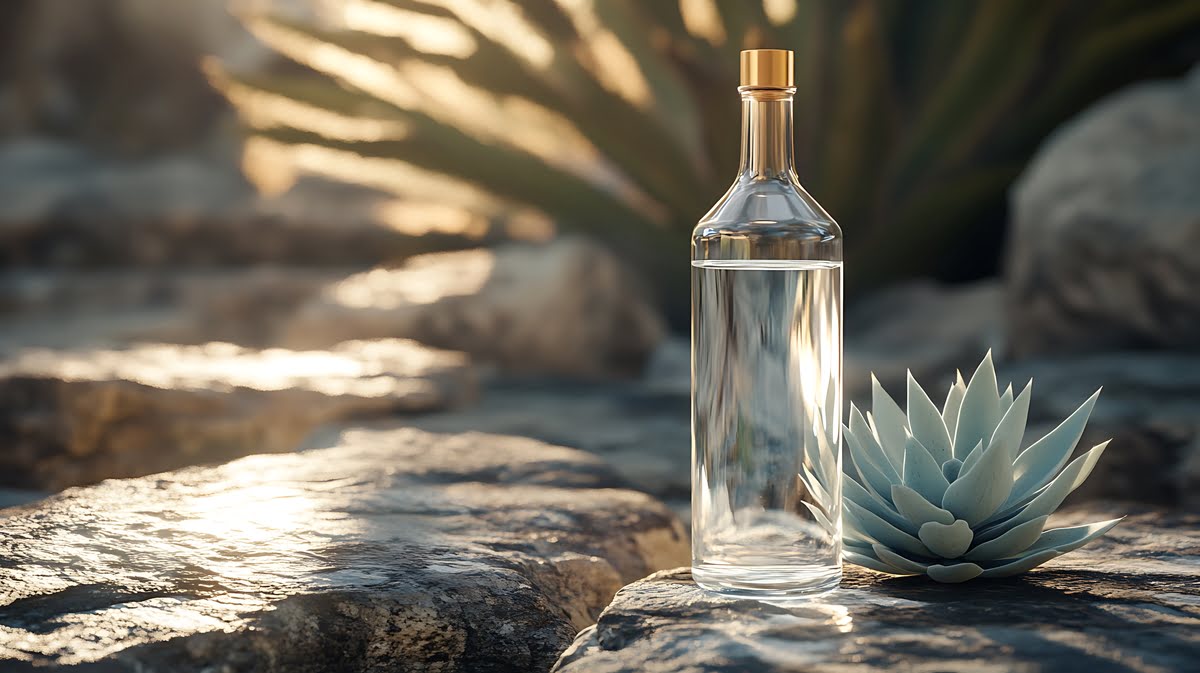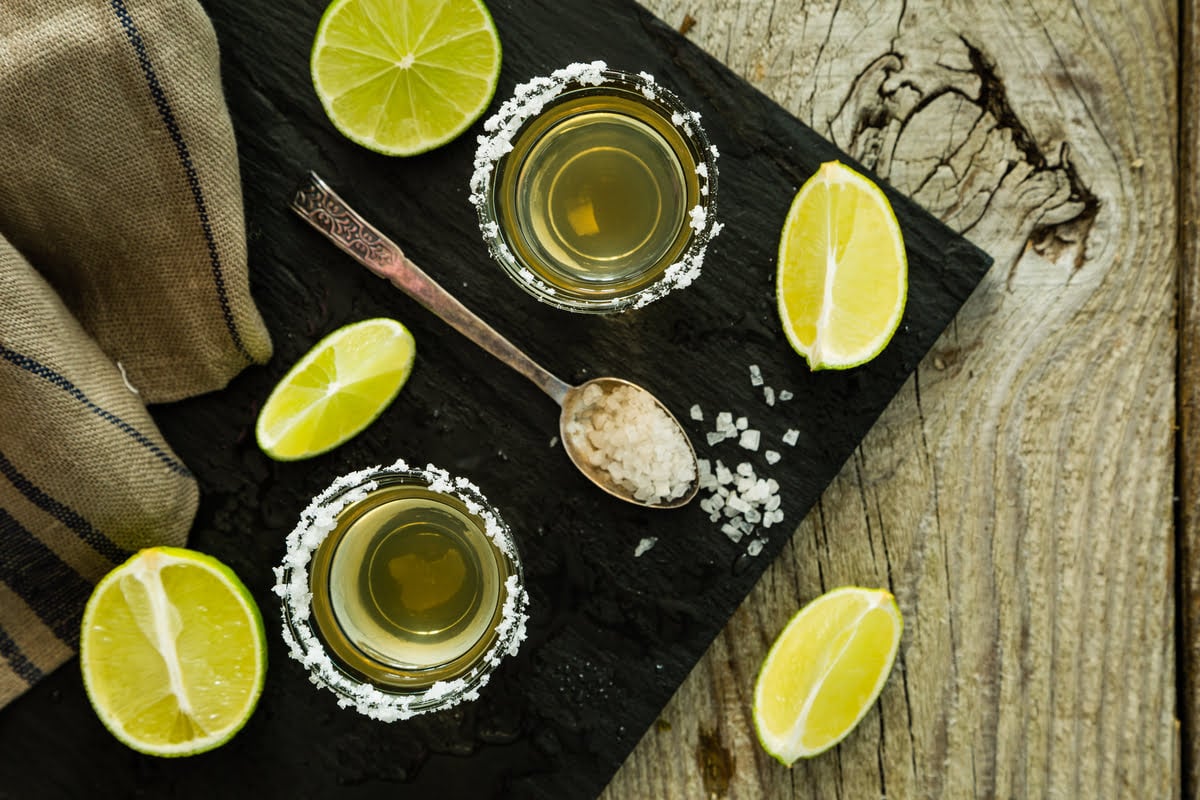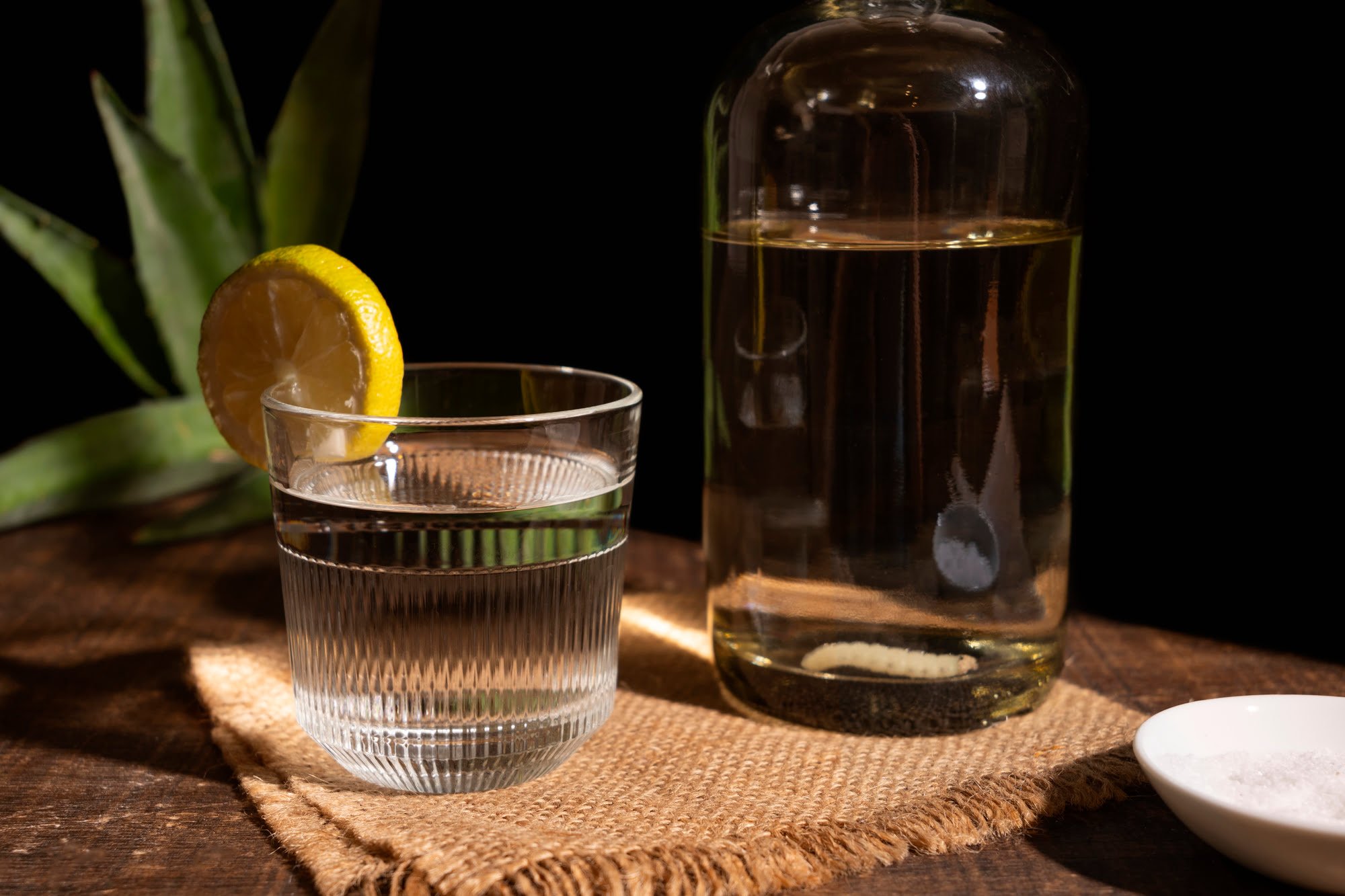
Short answer: most mezcal is bottled joven (unaged), but aged mezcal typically rests from 2 to 12 months or 12+ months in small oak barrels.
However, when mezcal is aged, the how matters as much as the how long—barrel size and toast, climate, and even glass resting shape the result. For a versatile introduction to unaged character, explore the Del Maguey VIDA Collection.
Some producers also practice glass maturation, where mezcal rests in inert glass for a year or more to round texture without adding oak flavors. If you came here asking how long is mezcal aged, the spectrum runs from 0 months (joven) to several years for select, carefully barrel-aged lots.
To experience pure, single-village profiles that spotlight terroir without oak, see the Del Maguey Single Village series—bottled joven to preserve agave character, roast nuance, and a vivid sense of place.
Mezcal Aging Times at a Glance
Before we dive into the details, here’s the quick context: the answer to how long is mezcal aged changes by style—most bottles are joven (unaged), while aged mezcal can mature in oak (reposado/añejo) or rest in inert glass.
Variables like barrel size and history, climate, and the spirit’s original intensity all shape mezcal aging, so “barrel aged mezcal” doesn’t always mean “more oak”—it means different textures and flavors.
In mezcal, “aged” follows official categories rather than vague marketing terms. These designations explain not just how long is mezcal aged, but how it’s matured—wood versus glass—so you can predict flavor and texture before you buy.
- Joven (Unaged): 0–2 months; no wood influence.
- Reposado (Rested): 2–12 months in oak; gentle spice, vanilla, softer edges.
- Añejo (Aged): 12+ months in small casks; deeper oak complexity, rounder mouthfeel.
- Madurado en Vidrio (Glass-Matured): typically 12+ months in glass; preserves agave while smoothing intensity.
These ranges cover the most common practices in mezcal aging; producers vary times based on agave variety, batch character, and house style.
Joven (Unaged): 0–2 Months
Fresh from distillation, joven mezcal showcases pure agave expression—roasted agave, citrus oils, peppery spice, and depending on agave species and roasting method, notes of smoke, cacao, or herbs. With no wood contact, flavors stay linear and vibrant. If you want to taste terroir and production decisions, start here.
Bright and versatile, joven shines in citrus-forward cocktails (Mezcal Margarita, Naked & Famous) or neat in a copita at ~18–20 °C; seek higher-proof, single-village bottlings to maximize roasted maguey, mineral snap, and gentle smoke—pure character without the overlay of mezcal aging.
Reposado (Rested): 2–12 Months in Wood
Reposado mezcal spends a short period in oak to gently soften edges. Expect subtle vanilla, baking spice, and a touch of caramel layered over the agave core.
The goal isn’t to turn mezcal into oak; it’s to add texture and integration. Many bartenders prefer reposado for stirred, spirit-forward cocktails where a hint of oak adds polish without masking character.
Añejo (Aged): Minimum 12 Months in Small Casks
With añejo mezcal, time deepens complexity. Smaller barrels accelerate interaction, yielding richer notes—dark chocolate, toasted nuts, dried fruit—while rounding the palate.
Because wood can overshadow delicate agave nuances, thoughtful producers select robust distillates for long-term aging. Añejo shines neat in a tulip glass, slowly sipped to appreciate evolution in the glass.
Madurado en Vidrio (Glass-Matured): ≥12 Months in Inert Vessels
Glass maturation rests mezcal in sealed glass demijohns, often in darkness, to encourage slow oxidation and ester integration without extracting flavor from wood.
The result: silkier mouthfeel, calmer aromatics, and intensified agave clarity. Think of it as “time seasoning” rather than “barrel seasoning.” It’s ideal when you want maturity and harmony but zero oak imprint.
Beyond the textural polish, glass-matured lots often show lifted florals, stone fruit, and clean minerality that make them superb neat sippers and precision cocktail bases (think Martini/mezcal riffs or highballs where oak would distract).
Look for labels noting “madurado en vidrio” with rest time (e.g., 12–24 months); producers usually choose robust, high-ester distillates that can mellow without losing identity. Serve just below room temp and pair with raw seafood, fresh cheeses, or citrus to spotlight that crystalline agave core.
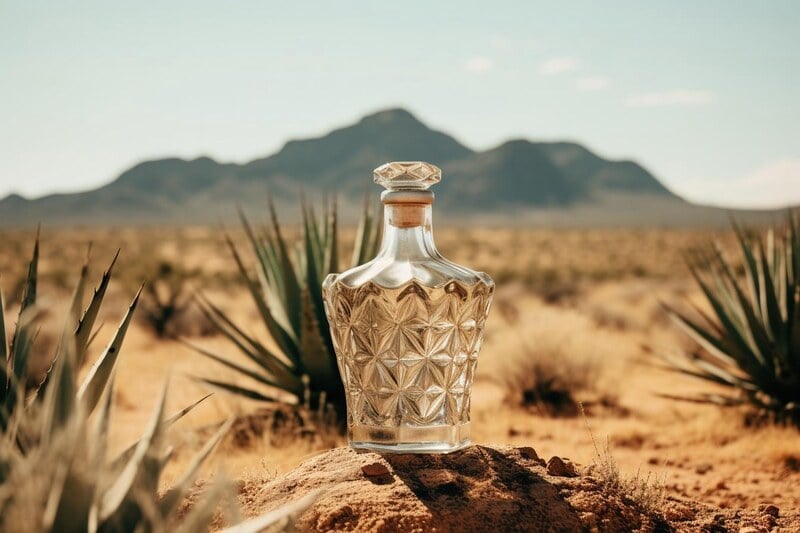
How Is Mezcal Aged? Methods and Materials
If you’re wondering how is mezcal aged, it comes down to vessel choice, environment, and time. Each factor shapes the final profile and determines how long mezcal is aged for a given batch.
Producers fine-tune the process by choosing oak species (ex-bourbon American vs. French), cask size (200 L barrels vs. larger puncheons), and toast/char to balance vanilla, spice, cacao, and structure.
Climate and airflow shape the “angel’s share”, concentrating flavors faster in warm, dry warehouses and slowing them in cool, humid ones. Many makers finish in a second cask or shift the spirit to glass once texture peaks, then blend barrels to preserve agave identity over oak—proof that in mezcal aging, method and timing matter as much as the months on the label.
Barrel Types: Ex-Bourbon, French Oak, New vs. Refill
A quick guide to how wood choice shapes flavor in barrel aged mezcal—often more than time alone in mezcal aging:
- Ex-bourbon American oak: classic vanilla, coconut, gentle caramel; popular for balanced barrel aged mezcal.
- French oak: tighter grain, baking spices, cacao; can add elegant tannin and length.
- New oak: fastest flavor transfer—use sparingly to avoid overshadowing agave.
- Refill (used) barrels: slower extraction; preserves agave while adding subtle polish.
Many producers blend cask types or finishes to fine-tune complexity without losing the mezcal’s identity.
Cask Size, Climate & Warehouse Conditions
Cask size and climate set the tempo for mezcal aging. Smaller barrels (around 200 L) boost surface contact and speed maturation, while larger formats slow the process for a gentler evolution of flavors.
Warmer warehouses accelerate oak interaction and mild oxidation, softening edges sooner; cooler cellars keep brightness and detail intact, but require more time to reach a similar level of integration.
Airflow and humidity determine the angel’s share and concentration—drier conditions increase evaporation and can intensify flavor more quickly. Resting position matters, too: vertical vs. horizontal storage changes stave exposure and micro-oxygenation, subtly shaping texture, tannin feel, and how clearly the agave core shines through.
Char/Toast Levels and Flavor Impact
Toasting breaks down lignin and hemicellulose, creating vanilla and spice tones; char adds smoke, cocoa, and a touch of bitterness that can frame sweetness. Light toast = subtle sweetness; heavy toast/char = bolder caramel and cocoa. For aged mezcal, moderate toast helps retain agave while adding dimension.
Prior fills matter too: a lightly charred refill cask yields subtler sweetness and lets roasted agave lead, while a freshly charred barrel acts like a carbon filter—smoothing harsher notes but potentially muting bright smoke if used too long.
Aging in Glass: Oxidation, Texture, and Aromatic Integration
In glass, there’s no wood extraction—only slow integration. Tiny oxygen ingress over time mellows sharp edges, knits fruit and smoke, and softens alcohol heat.
Expect rounder texture and a calmer nose while keeping roasted agave front and center. Because flavor doesn’t come from oak, producers may choose longer rest periods to achieve the same sense of harmony.
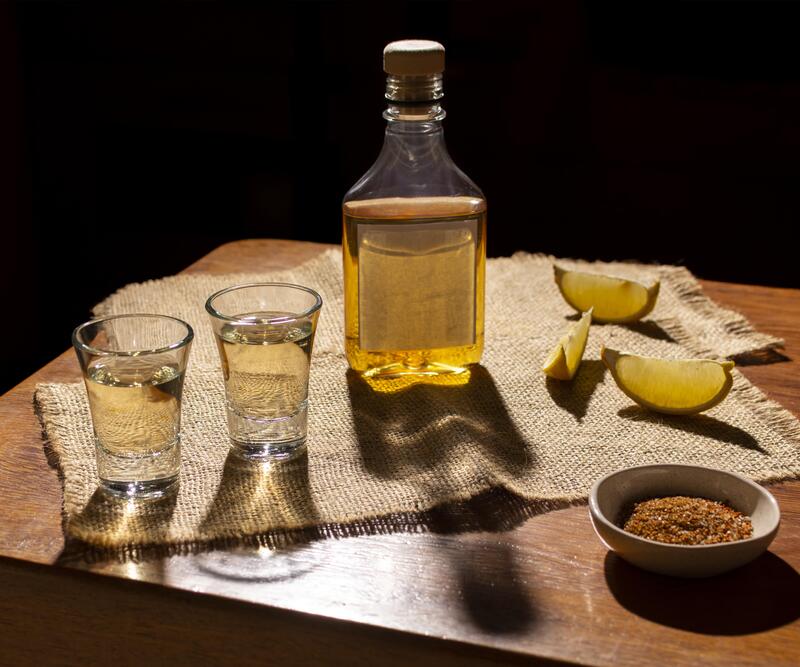
How Long Is Mezcal Aged Compared to Tequila?
Tequila and mezcal share familiar age statements—blanco/joven, reposado (2–12 months), and añejo (12+ months in small casks). Tequila also includes extra añejo (3+ years), whereas many mezcal traditions prioritize minimal oak to preserve regional agave character.
That’s why you’ll see more mezcal bottled joven or glass-matured than heavily mezcal aged in wood. When mezcal is aged longer, producers tend to select assertive, high-ester distillates that can carry oak without losing identity. ¿Mezcal or Tequila? That’s your choice.
Does Mezcal Age in the Bottle? Storage, Oxidation & Best Practices
Unlike wine, spirits do not continue to age once bottled. Sealed bottles evolve slowly, mainly through tiny oxygen exchange at the closure. Open bottles will oxidize over time, softening bright notes and muting aromatics.
For best results, store bottles upright to protect natural cork and keep them in a cool, dark place away from heat and light. After opening, minimize headspace—if you plan to keep a bottle for months, decant into a smaller vessel to slow oxidation. When serving, let mezcal rest in the glass for a minute or two; gentle aeration opens layered aromas without dulling the agave core.
Choosing the Right Mezcal Age for Your Palate
If you crave raw agave clarity, reach for Del Maguey Village Tradiciones Collection, a mezcal joven: bright citrus, roasted maguey, mineral snap, and gentle smoke—perfect neat or in zesty sours. Prefer softer edges with just a whisper of oak? Reposado adds vanilla and baking spice that polish spirit-forward cocktails like Old Fashioned riffs.
When you’re after deeper, dessert-leaning complexity, añejo rewards slow sipping with cocoa, toasted nuts, and dried fruit wrapped around structured agave. And if you want maturity without oak flavors, pick madurado en vidrio (glass-matured) for a smoother, integrated profile that keeps the agave front and center.
Ultimately, how long mezcal is aged should follow the spirit’s character. The best producers start with expressive, well-made distillate and then choose wood—or glass—only if it amplifies, not masks, the agave. Related terms you may see: aged mezcal, mezcal aged, barrel aged mezcal, mezcal aging, how is mezcal aged.



